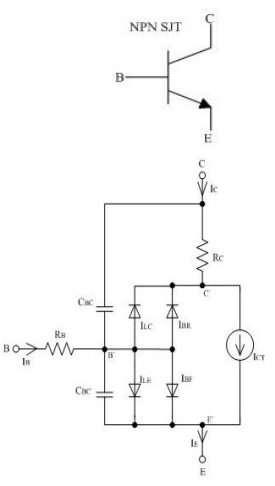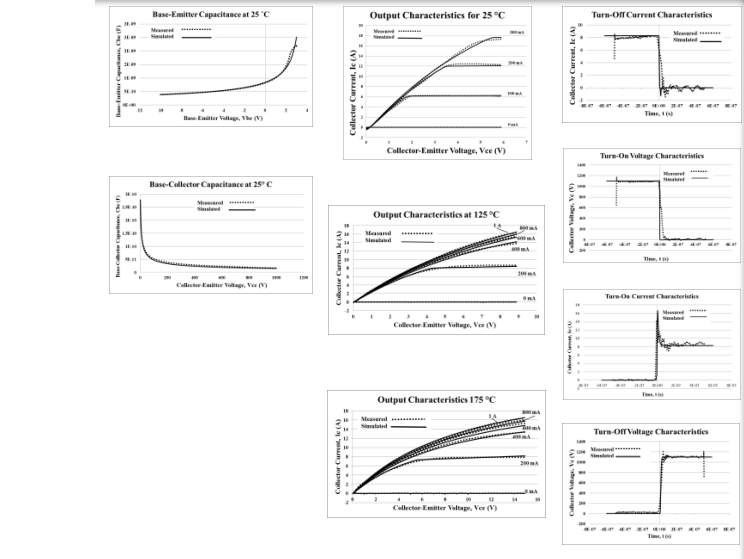Modeling and Simulation of 1.7kV SiC “Super” Junction Transistor
Student: Staci Brooks
Degree: M.S., August 2016
Major Professor: Dr. H. Alan Mantooth
Research Area(s):
Modeling & Simulation
Background/Relevance
- SiC material especially attractive for high voltage power devices
- SiC SJT is a current driven device capable of 200+ ˚C operation
- Comparable to power MOSFETS and capable of use in parallel at increasing temperatures
Innovation
- No Existing compact SJT Model
- “Super” Junction theory allows for offset of trade-off between specific on-resistance and breakdown voltage
Approach
- Model developed from Power BJT equivalent circuit
- Model implements Gummel-Poon parameters and adopts quasi-saturation collector series representation from ECCE SiC 1200V BJT model
- Compiled in Verilog-A
- Simulated results achieved with Spectre
- Simulations verified in IC-CAP and Paragon2
- Data extracted from measurements and GeneSiC GA08JT17-247 device datasheet

Key Results
- C-V Characteristics (Cbe vs Vbe) and (Cbc vs Vce)
- Output Characteristics (Ic vs Vce)
- Switching Characteristics (Resistive Load)
- [Applicable)]simulations verified at 25 ˚C, 125 ˚C , and 175 ˚C

Conclusions
- Work laid solid foundation for modeling GeneSiC’s SiC SJT devices
- All simulations (C-V, Output, and Switching) verified and deemed acceptable after parameter extraction
Future Work
- Conversion to more advanced bipolar model (i.e. MEXTRAM) for added accuracy and efficiency
- Investigate self-heating and parasitic effects
